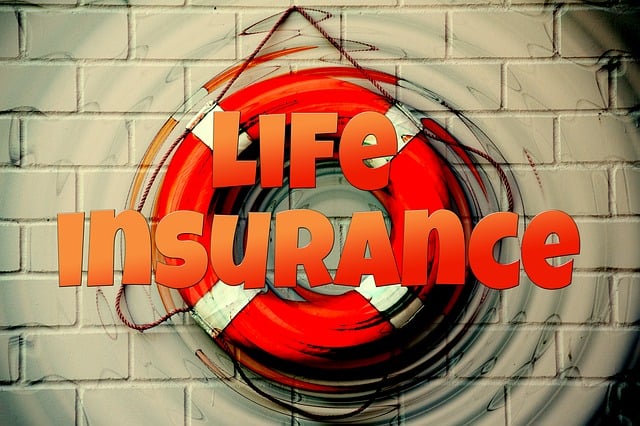How Much Does Life Insurance Typically Cost?

This analysis shows that the fee that companies charge for life insurance decreases with underwriting age, with an average of $0.12–$0.14 per $1,000 face amount per month ($1.44–$1.62 per $1,000 per year) for a 20-year term policy on a healthy 30-year-old.
However, the same policy would cost from $16 to $19 a month (from $197 to $227 per year) for a healthy 40-year-old. On the other hand, a relatively healthy 50-year-old will have to pay between $32 to $40 a month ($386- $485 per annum) for a similar plan.
Average Life Insurance Rates
In the quotation of an insurance product, the policyholder must pay a certain agreed amount through installments referred to as premiums. However, it will depend on the policyholder’s gender, age, type of policy, amount of coverage, and policy term.
- For 30-year-olds: A 20-year, $250,000 term life insurance policy which is considered low-cost costs a 30-year-old male about $14 per month or $162 per year, while a 30-year-old female feels about $12 per month or $144 per year.
- For 40-year-olds: This 20-year $250,000 term policy costs $19/ month or $227 per year if you are a 40-year-old male and $16 / month or $197 per year if you are a 40-year-old female.
- For 50-year-olds: There are high variations to the price when a 50-year-old male will pay about $40 monthly ($485 annually) for a 20-year $250000 term life insurance policy while a 50-year-old female will be charged around $32 per month ($386 annually).
In this term, life insurance rates are broken down by age and gender.
It is wise to buy life insurance when young because rates can skyrocket and there are close to no choices left. The common tendency observed every year is that life insurance quotes increase, not excluding even the healthiest people. Since it’s possible to get a health complication that may qualify you for even more expensive coverage, delaying your purchase is also a risk.
Term life insurance enables you to achieve level rates for years, say 10 years, 20 years, or 30 years.
For instance, term life insurance rates quoted for a 20-year policy for individuals the age of 70 years are way above 1000% of those of a 30-year-old buying a similar policy. Apart from this, the readers should also know it is normal for 30-year terms not to be offered to applicants who are 60 years old and above.
- Term Life Insurance Rates by Term Length
We analyzed the average annual rates for 30-year-old males and females purchasing policies with level term lengths of 10, 20, and 30 years
Who Benefits and Who Losses from Your Life Insurance?
Life insurance companies primarily seek to determine one crucial factor: your likely lifespan. The information they get helps in approximating this complex question and in arriving at your insurance quotes. Here are the key factors that affect term life insurance rates:
- Age, Gender, and Occupation: All these simple aspects enable the insurers to estimate your risk profile fairly well.
- Health: These areas of life prove that your overall health has a direct correlation with your life span. Some of these elements include body mass, height, prescription drugs, other health disorders, cigarette smoking, substance use history, and your parent and sibling’s health. Further, an assessment of results from any necessary medical examinations will be made.
- Driving Record: Insurance companies consider any violations on your record as the type of driver you are for instance if you have ever been charged with DUI or driving recklessly.
- Criminal Record: This is usually a result of major felonies or multiple felony convictions resulting in either loss of employment, inability to pay…
- Risky Hobbies: Poisoning oneself with high-risk undertakings such as flying an aircraft or scuba diving may attract higher premiums or no coverage at all.
- Credit and Finances: Certain life insurers employ risk scores that incorporate credit history and record information such as bankruptcies.
- Type of Life Insurance Policy: Basically, there are two categories of life insurance: term life insurance and permanent life insurance. Permanent life insurance has life coverage but it also costs more than term life insurance.
How You Can Pay Less for Your Life Insurance
- Opt for a Term Life Insurance Policy: The cheapest among them is term life insurance since it has a straightforward function – pure life insurance for the specific term and fixed rates depending on the selected term.
- Purchase Life Insurance While You’re Young: They incur high charges in the premium as you age, which makes life insurance companies give higher prices to older policyholders. If you purchase a policy at an early age, you can get lower premiums than you can get once you turn some age or have some pre-existing conditions.
- Improve Your Health: Insurance costs remain high due to several health conditions as well as smoking. Generally improving your health and the act of ceasing to smoke, along with all nicotine-related products can indeed cause amazing reductions in your life insurance.
- Select Riders Carefully: Riders are additional services you can opt for on your policy. Options that include help with covering long-term care and other living benefits can be good, but including it adds to your policy’s expense. Select riders which you would prefer to meet.
- Compare Life Insurance Quotes: Every insurance company comes up with its way of determining the quotes. While one company can provide lower prices based on the client’s health conditions, another can provide Cheap Car Insurance for senior applicants. There is nothing as important as getting a number of insurers to compare their rates to get the best deal.



